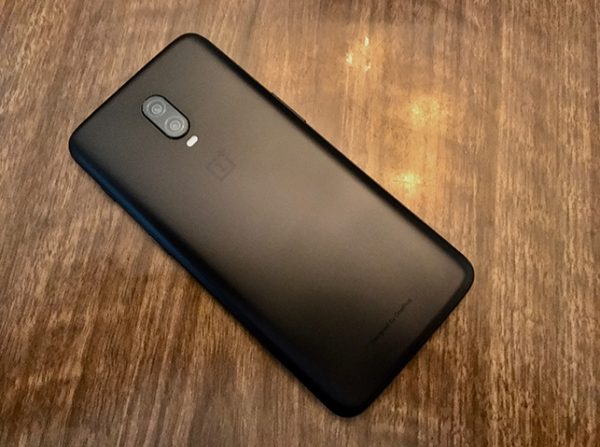When I need to futz with an Android device, OnePlus is the company that I typically turn to. For the money, you won't find a more capable handset in North America. The OnePlus 6, thanks largely to its zippy performance and Android Oreo's being a joy to use, was the first Android device I was able to live with as my daily driver. The OnePlus 6T is, with the exception of a few minor tweaks, very much the same handset as its predecessor. I'm very OK with this.
Under the hood, there's not much to see: OnePlus has used the same Snapdragon 845 processor. The version of the 6T that I took for a spin comes packing 8GB of RAM and 128GB of storage. It's a speedy-feeling set of specs that served me well with the OnePlus 6 and now, the 6T. Apps, fly open, I've yet to see any interface lag and I've no complaints about how quickly either smartphone does anything.
With the OnePlus 6T, users get a 3,700mAh battery. Given that I've grown accustomed to the low level of battery that my aging iPhone 7 Plus leaves me with at the end of the day, I was pretty pleased with how much juice was still left in the 6T when I set it down for the night. While it might not come with wireless charging baked into it, the OnePlus 6T's Dash quick charging technology more than made up for its absence. I'll take a rapid charge over the simplicity of not having to plug a cord into my hardware any day.

Everything looks frigging great on this phone's 6.4-inch AMOLED (2340 x 1080) display. Movies, text and photos all pop. The notch on the 6T is the smallest I've personally encountered, on any handset, so far. Within moments of picking it up to tap and swipe away at, I found that the notch all but disappeared into the display's ample real estate. It's a definite improvement over the OnePlus 6 or even what the Google Pixel and the latest iPhones have to offer.
One of the most talked about features of the OnePlus 6T is its in-display fingerprint scanner. It is indeed in the display and it does scan fingerprints. After a week of using it, I've noted that it isn't quite as fast as traditional fingerprint readers can be. There's a wee bit of lag to it, as you wait to unlock the phone–not enough that it's a pain in the ass, but it's there. I suspect that this could be sorted out in a future software update. That said, tapping on the display feels like a step backwards: having the scanner right there to pass a finger over it, on the back panel of a phone, with the same hand that you're holding the device with, felt more natural.

One area where OnePlus still can't compete with the big boys is in the area of camera performance. Like its predecessor, the 6T comes packing a dual lens (16-MP & 20-MP) setup. The photo quality is OK, even good at times. But it can't hold a candle to the shooters in a current generation Apple or Google branded device. This go 'round, OnePlus has added a night shooting mode to their camera's photographic arsenal. By taking multiple shots of the same scene at multiple exposures, the camera app is able to create a composite that boasts less noise and more low-light detail. It works… sort of. I found most shots I took using this mode ended up with a weird red coloration, no matter what I pointed my camera at. It's a shortcoming that I can live with, however, considering the price bump that moving up to a flagship handset from Google or Apple would cost.
In the U.S., the OnePlus 6T will set you back $549 for the 6GB/128GB, $579 with 8GB of RAM and 128GB storage, or $629 for 8GB and 256GB. For specs and performance, camera aside, like the 6T offers, that's stupid cheap. With iPhones going up in price to a level that I don't think I can stomach, it's heartening to know that while phones like the OnePlus 6T aren't perfect, they're available for far less coin and feel, in use, almost as good.
All images via Seamus Bellamy






